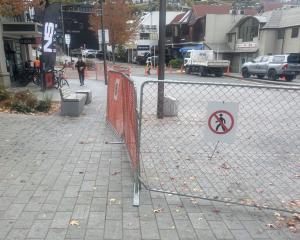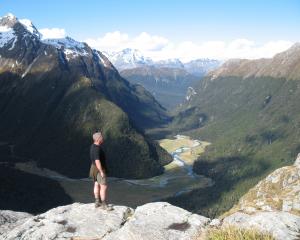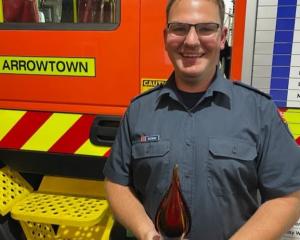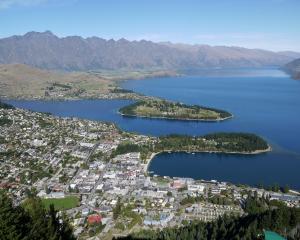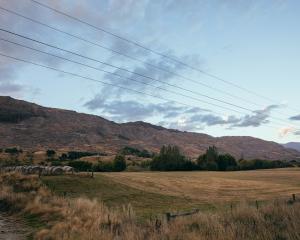Seven special housing areas have been approved in the Queenstown area, potentially resulting in nearly 500 new homes in the next few years. Two more, which would include 347 houses, are due to be considered by the council. Tracey Roxburgh takes a look at special housing areas and the part they play in the wider conversation Queenstown needs to have about its future.
Queenstown will soon need to make some significant decisions about its future.
In September, the Housing Accord the Queenstown Lakes District Council signed with the Government in 2013, in place for three years, is due to be repealed.
Under the accord, seven special housing areas (SHAs) have been approved by Building and Housing Minister Nick Smith.
Two more are being considered by the council, which will decide whether to recommend them to the Government.
The purpose of such accords under the Housing Accord and Special Housing Areas Act, is to increase the housing supply within an area, for example the Wakatipu.
The assumption is that by increasing the housing supply to meet demand, house prices will become more affordable.
But Queenstown Lakes district chief executive Mike Theelen says while the council is meeting, or exceeding, the targets of its agreement with the Government, SHAs is no panacea.
Problems with housing supply were complex, he said.
It was one thing to increase the housing supply, but another to manage that increase and still protect the proverbial golden goose that was Queenstown's natural beauty.
Ensuring the area remained affordable was arguably one of the most difficult layers of the problem and diversifying the resort's economy to "really make Queenstown work for the people that call this home'' was yet another.
"They are big conversations and they're conversations that most communities at different times go through.
"There will be a natural break point at which the housing market just gets out of kilter with what people are able to do by the way of employment.
"One of the challenges for us is we want to grow the resilience in our economy, which means ensuring that as interest in the town grows, that we're also growing employment ... [and] education.
"It's not simply about where do we stick more houses.
"Pushing people into houses where there's no jobs for them, or where the cost of living becomes unaffordable isn't an answer.''
In the latest data, the median house price for the Central Otago Lakes, which includes Queenstown, is $730,050, a 42% increase in the past year.
That was expensive by anyone's definition, Mr Theelen said.
The price was driven, in part, by people from outside the region who saw Queenstown as a good investment.
That, inevitably, affected the resident population, many of whom were employed in the tourism or hospitality sectors.
While a "component'' of affordability was included in the council's housing accord, retaining any affordability was another thing entirely.
In 2009, the council ratified Plan Change 24 - Affordable and Community Housing, which sought to introduce affordable housing into district plan policies.
That meant it became a relevant matter when plan changes or variations were proposed and when resource consent applications were considered and, where appropriate, required the delivery of affordable housing.
Increasingly, however, it had become clear the objective of the plan change was only working for the first generation homeowner.
The issue of retained affordability was ‘‘certainly'' one the council, and councillors, were aware of, Mr Theelen said.
And the time might be coming when the plan change's effectiveness was re-examined.
The issues the resort faces with regards to housing are, to say the least, contentious.
Already the council has been met with opposition to several developments proposed under the special housing legislation.
While many were in support, to some extent, of the Queenstown Country Club retirement village, to be built near Ladies Mile between Lake Hayes Estate and Shotover Country, the Lake Hayes Estate Community Association was not.
Its problem was mainly the urbanisation of the Ladies Mile flats on State Highway 6 which have, until now, been rural.
Association chairman Ben Espie told councillors at a meeting in May approving the village as an SHA would create a precedent.
Last week, an expression of interest was lodged for the Glenpanel SHA, across the Ladies Mile from the village.
It stated the council's decision to recommend the retirement village to the Minister was "the impetus and opportunity'' to bring forward Glenpanel.
Mr Espie said the approval of the village under the special housing legislation was "a contradiction'' of the council's district plan and proposed district plan.
"We didn't single out Queenstown Country Club necessarily - that overarching issue of keeping the Ladies Mile flats rural is really our big beef, if you like.''
But Mr Theelen said that change was not simply an outcome of the special housing legislative process.
"I think in some respects ... at some point in time, we were always going to have to confront that [rezoning] issue.
"Ultimately, as the district continues to grow and we've got relatively narrow corridors of growth ... I think we are going to have to manage that.''
In time, the council would need to debate whether the policies protecting the entrances to the district, which were "sufficient'' for the knowledge at the time they were put in place, were still appropriate.
"We are reaching our 2025 [population] targets five, 10, 15 years earlier than anyone imagined.
"That debate needs to [happen] again and we need to ask ourselves ‘exactly what is the future?'
"The worst outcome is that we ... are like a frog in a frypan that gets warmed up and before we know it we've been cooked.
"It may mean that ultimately the ideas we had in the '90s and early 2000s may no longer be the right solutions today.''




